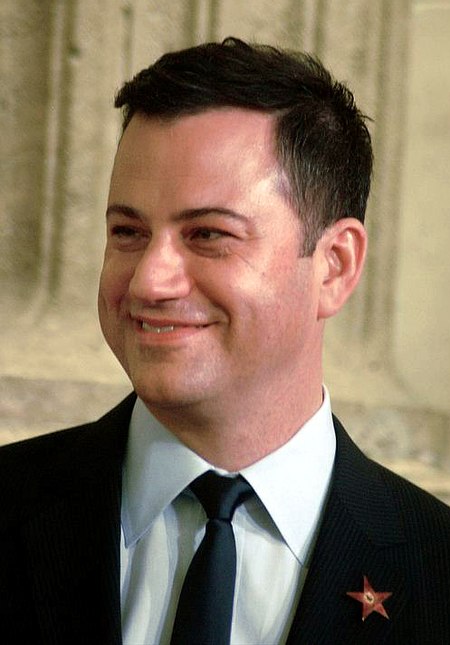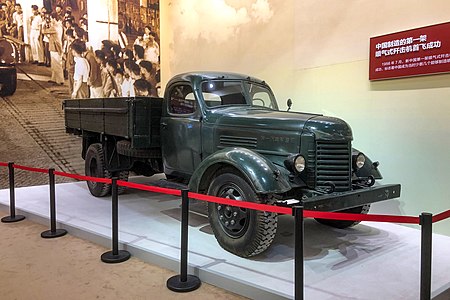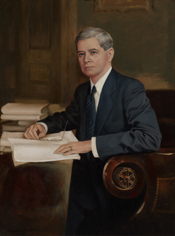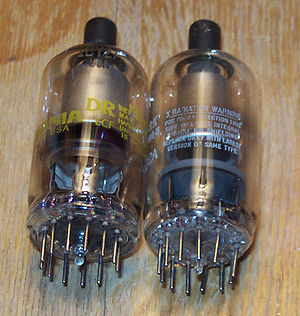X-ray tube
|
Read other articles:

Psychological theory regarding individuals on the autism spectrum Both autistic and non-autistic people can find it difficult to empathize with each other. The fact that both people in the interaction have trouble with understanding and empathy is why the theory is called the double empathy problem.[1] Neurodiversity paradigm Philosophy Bodily autonomy Disability rights movement Independent living movement Self-advocacy Organizations Aspies For Freedom Autism Network International Autist…

Norwegian footballer and coach (born 1955) Arne Dokken Personal informationFull name Arne DokkenDate of birth (1955-08-27) 27 August 1955 (age 68)Place of birth Drammen, NorwayPosition(s) ForwardYouth career Åssiden IFSenior career*Years Team Apps (Gls)1975–1977 Strømsgodset 43 (26)1978–1981 Lillestrøm SK 79 (35)1981–1983 Panathinaikos 23 (10)1983–1984 Apollon Smyrnis 24 (6)1984–1986 Rosenborg 25 (5)International career1975–1984[1] Norway 24 (2)Managerial career1985 R…

Species of eucalyptus Bogong gum Eucalyptus chapmaniana in Maranoa Gardens Scientific classification Kingdom: Plantae Clade: Tracheophytes Clade: Angiosperms Clade: Eudicots Clade: Rosids Order: Myrtales Family: Myrtaceae Genus: Eucalyptus Species: E. chapmaniana Binomial name Eucalyptus chapmanianaCameron[1] Eucalyptus chapmaniana, commonly known as the Bogong gum,[2] is a species of small to medium-sized tree endemic to montane and eastern Australia. It has rough, fibrous …
Commuter rail system in Finland VR commuter railVR:n lähiliikenneVR:s närtrafikA Class Sm4 unit at Tampere station in July 2016 after working a Main Line regional service.OverviewArea servedRegions ofUusimaaKanta-HämeKymenlaaksoPirkanmaaPäijät-Häme FinlandTransit typeCommuter railNumber of lines8Number of stations36Websitehttps://www.vr.fi/en/railway-stations-and-routes/commuter-trafficOperationBegan operation28 May 1972Operator(s)VRCharacterAbove groundNumber of vehicles50 Sm2 + 20 Sm4 + …

64e cérémonie des Primetime Emmy Awards Primetime Emmy Awards Organisée par l'Academy of Television Arts and Sciences Détails Date 23 septembre 2012(Creative Arts : 15 septembre) Lieu Nokia Theatre, Los Angeles États-Unis Présentateur Jimmy Kimmel Diffusé sur ABC Site web http://www.emmys.org/ Résumé Meilleure série dramatique Homeland Meilleure série comique Modern Family Séries les plus récompensées Homeland (4)Modern Family (4)Game Change (4) Séries les plus nommées …

FilmDark RisingDirected byAndrew CymekWritten by Andrew Cymek Mihkel Harilaid Produced by Mihkel Harilaid Brigitte Kingsley Productioncompanies Black Walk Defiant Empire Dark Rising is a sword and sorcery adult-oriented franchise of two made-for-television films, a twelve-episode television miniseries and another five-episode television miniseries, from the husband and wife team of Andrew Cymek and Brigitte Kingsley. The franchise is written by creator Cymek, produced by Kingsley and adapted for…

Агентство національної безпеки (АНБ)англ. National Security Agency (NSA) Штаб-квартира АНБ Загальна інформація: Тип: спецслужба Юрисдикція: США Дата заснування: 4 листопада 1952 Відомство-попередник: Агентство безпеки збройних сил Девіз: Defending Our Nation. Securing The Future.(укр. Захищаючи на…

Запрос «Пунсон» перенаправляется сюда; об обозначении населённого пункта на картах см. Пунсон (картография).Комплект (набор) шаровых пуансонов. Пуансо́н или пунсо́н[1][2][3][4] (фр. poinçon) — одна из основных деталей инструмента, используемого при маркиро…

Banco Central de Myanmar Sede del banco central de Birmania Birmania LogoBanco central de Birmania BirmaniaSede NaipyidóFundación 1990Gobernador Kyaw Kyaw MaungDivisa Kyat birmanoMMK (ISO 4217)Precedido por Banco de la Unión de Birmania Banco Popular de la Unión de BirmaniaSitio web https://www.cbm.gov.mm/[editar datos en Wikidata] El Banco Central de Myanmar es el banco central de Birmania (Myanmar). Fue establecido bajo la Ley del Banco Cen…

This article's lead section may be too short to adequately summarize the key points. Please consider expanding the lead to provide an accessible overview of all important aspects of the article. (April 2023) This is a list of assets owned by the New York Times Company.[1] Business units Media properties The New York Times The New York Times International Edition T: The New York Times Style Magazine The New York Times Book Review The New York Times Magazine The New York Times Licensing Gr…

2015 تفاصيل البطولة الدولة المستضيفة الولايات المتحدة كندا المدن 14 المنظم كونكاكاف التاريخ يوليو 7–26 الفرق Qualified teams الأماكن Venues (في 14 المدن المستضيفة) البطل منتخب المكسيك لكرة القدم إحصائيات البطولة عدد المباريات 24 عدد الأهداف 56 (2.33 لكل مباراة) الحضور 10903…

1864 battle of the American Civil War Mule Shoe redirects here. For the type of shoe, see Mule (shoe). Battle of Spotsylvania Court HousePart of the American Civil WarBattle of Spottsylvania, Thure de ThulstrupDateMay 9–21, 1864LocationSpotsylvania County, Virginia38°13′27″N 77°35′53″W / 38.22417°N 77.59806°W / 38.22417; -77.59806Result Inconclusive[1]Belligerents United States Confederate StatesCommanders and leaders Ulysses S. Grant George Meade Ro…

American actor (1931–2022) Philip Baker HallHall at the 2009 Tribeca Film FestivalBorn(1931-09-10)September 10, 1931Toledo, Ohio, U.S.DiedJune 12, 2022(2022-06-12) (aged 90)Glendale, California, U.S.Resting placeForest Lawn Memorial ParkOccupationActorYears active1960–2021[1]Spouses Mary-Ella Holst (m. 1955; div. 1966) Dianne Lewis (m. 1973; div. 1976) Holly Wolfle &#…

Vehicle traffic in an expressway in BeijingThis article may require copy editing for grammar, style, cohesion, tone, or spelling. You can assist by editing it. (May 2024) (Learn how and when to remove this message) This article or section possibly contains synthesis of material which does not verifiably mention or relate to the main topic. Relevant discussion may be found on the talk page. (May 2024) (Learn how and when to remove this message)Part of a series on theHistory of science and technol…

Dutch siege against Portugal in Malacca, Malaysia Siege of MalaccaPart of Dutch–Portuguese War1635 map of the Portuguese fort and the city of Malacca.Date3 August 1640 – 14 January 1641; 5 months, 1 week, and 4 daysLocationMalacca, Malay Peninsula2°12′N 102°15′E / 2.200°N 102.250°E / 2.200; 102.250Result Dutch and Johor victoryTerritorialchanges Malacca under Dutch controlBelligerents Dutch East India CompanyJohor PortugalCommanders and leaders Adr…

Écurie Aga Khan Casaque de l'écurie Aga Khan Données clés Fondateur Karim Aga Khan IV Entraineurs France : Francis-Henri Graffard, Mikel Delzangles, Jean-Claude Rouget Irlande : Dermot Weld, Johnny Murtagh, Michael Halford Chevaux Petite Étoile, Blushing Groom, Shergar, Akiyda, Darshaan, Daylami, Sendawar, Sinndar, Dalakhani, Zarkava, Siyouni, Zarak, Vadeni, Tarnawa, Tahiyra modifier L'écurie Aga Khan est une écurie de chevaux de course participant aux courses hippiques de plat …

Disambiguazione – SS 4 rimanda qui. Se stai cercando altri significati, vedi SS4. Strada statale 4Via SalariaDenominazioni precedentiStrada nazionale 67 Salaria Denominazioni successiveStrada provinciale 235 Via Salaria (tratto Ascoli Piceno-San Benedetto del Tronto) LocalizzazioneStato Italia Regioni Lazio Marche Province Roma Rieti Ascoli Piceno DatiClassificazioneStrada statale InizioRoma FineSan Benedetto del Tronto Lunghezza208,2 km Provvedimento di i…

American politician (1867–1937) James Paul BuchananMember of the U.S. House of Representativesfrom Texas's 10th districtIn officeApril 15, 1913 – February 22, 1937Preceded byAlbert S. BurlesonSucceeded byLyndon B. JohnsonMember of the Texas House of Representativesfrom the 69th districtIn officeJanuary 14, 1913 - April 1, 1913Preceded byJoe Frank CoffeySucceeded bySam D.W. Low, Sr.Member of the Texas House of Representativesfrom the 47th districtI…

Top professional Spanish football division This article is about the top division in men's Spanish football. For top division in women's Spanish football, see Liga F. For other uses, see Liga (disambiguation). Football leagueLaLiga EA SportsOrganising bodyLiga Nacional de Fútbol ProfesionalFounded1929; 95 years ago (1929)CountrySpainConfederationUEFANumber of teams20 (since 1997–98)Level on pyramid1Relegation toSegunda DivisiónDomestic cup(s)Copa del ReySupercopa de España…

SaicomuneSai – Veduta LocalizzazioneStato Francia Regione Normandia Dipartimento Orne ArrondissementArgentan CantoneArgentan-1 TerritorioCoordinate48°44′41″N 0°01′36″E48°44′41″N, 0°01′36″E (Sai) Altitudine225 m s.l.m. Superficie5,1 km² Abitanti225[1] (2009) Densità44,12 ab./km² Altre informazioniCod. postale61200 Fuso orarioUTC+1 Codice INSEE61358 CartografiaSai Modifica dati su Wikidata · Manuale Sai è un comune francese di 2…












